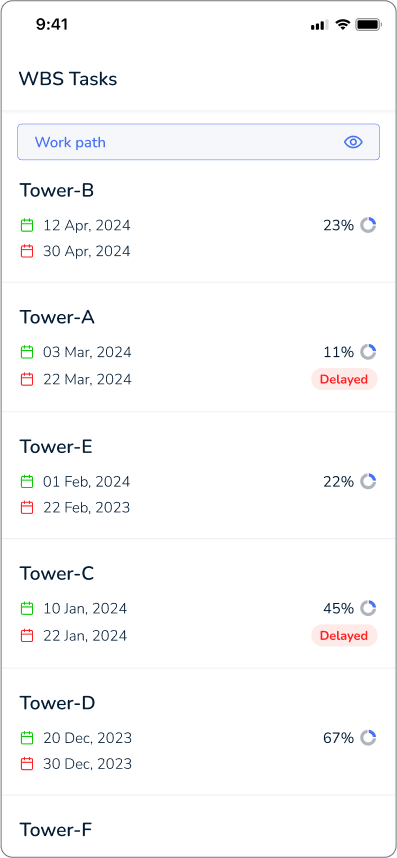
In the fast-paced world of construction industry, precision and accuracy are key. Civil engineers and supervisors rely heavily on calculations to ensure projects are completed efficiently and within budget. From determining the right amount of materials needed to calculating labor costs, having the correct formulas at your fingertips can make all the difference in real estate. Here is a quick reference of 50 essential formulas that every construction professional should know. Whether you are a seasoned engineer or a novice supervisor, these formulas will help make your life easier and streamline your construction processes.
1. Area Calculation:
Rectangle: Area = Length × Width Triangle: Area = 0.5 × Base × Height Circle: Area = π × Radius²
2. Volume Calculation
Cube: Volume = Side³ Rectangular Prism: Volume = Length × Width × Height Cylinder: Volume = π × Radius² × Height Sphere: Volume = (4/3) × π × Radius³
3. Concrete Calculation:
Volume of Concrete = Length × Width × Height (L × W × H) Total Concrete Quantity = Volume of Concrete × 1.54 (to account for voids in aggregates) Cement Quantity = (Total Concrete Quantity × Cement Ratio) / Sum of Ratios Sand Quantity = (Total Concrete Quantity × Sand Ratio) / Sum of Ratios Aggregate Quantity = (Total Concrete Quantity × Aggregate Ratio) / Sum of Ratios
4. Earthwork Calculation:
Volume of Cut or Fill = Average Cross-sectional Area × Length Average Cross-sectional Area = (Area 1 + Area 2) / 2
5. Slope Calculation:
Slope (as a percentage) = (Vertical Distance / Horizontal Distance) × 100 Slope (as a ratio) = Vertical Distance: Horizontal Distance
6. Steel Quantity Calculation
Steel Quantity = (Length of Bar × Number of Bars × Weight of Steel per Unit Length) / 1000 Weight of Steel per Unit Length = (Diameter² × π) / 162.198 (for steel bars in kg/m, where diameter is in mm)
7. Unit Weight:
- Unit Weight of Steel = 7850 kg/m³
- Unit Weight of Concrete = 2400 kg/m³
- Unit Weight of Brick = 1600-2000 kg/m³ (depending on type)
8. Load Bearing Capacity:
Bearing Capacity = (Ultimate Bearing Capacity × Factor of Safety) / Unit Weight of Soil
9. Cantilever Beam Deflection:
Deflection = (Point Load × Length³) / (3 × Elastic Modulus × Moment of Inertia)
10. Slab Load Calculation:
Slab Load = Dead Load + Live Load
11. Moment of Inertia:
Rectangle: I = (Width × Height³) / 12 Circle: I = (π × Diameter⁴) / 64
12. Section Modulus:
Rectangle: Z = (Width × Height²) / 6
13. Bending Moment:
Simply Supported Beam: M = (Point Load × Length) / 4
14. Shear Force:
Simply Supported Beam: V = Point Load / 2
15. Bricks Calculation:
Number of Bricks = (Wall Volume × 1000) / (Brick Volume + Mortar Volume)
16. Dry Material Quantity for Mortar:
Cement Quantity = (Mortar Volume × Cement Ratio) / Sum of Ratios Sand Quantity = (Mortar Volume × Sand Ratio) / Sum of Ratios
17. Wet Mortar Volume:
Wet Mortar Volume = Dry Mortar Volume × 1.3 (approximately)
18. Excavation Calculation:
Excavation Volume = Trench Length × Trench Width × Trench Depth
19. Retaining Wall Stability:
Factor of Safety against Sliding = (Resisting Force × Wall Length) / (Driving Force × Wall Height)
20. One-way Slab Thickness:
Thickness = (Span / Ratio) + (Clear Cover + Main Bar Diameter / 2)
21. Two-way Slab Thickness:
Thickness = (Shorter Span / Ratio) + (Clear Cover + Main Bar Diameter / 2)
22. Pile Load Capacity:
Load Capacity = (End Bearing Capacity × Pile Tip Area) + (Skin Friction × Pile Surface Area)
23. Compaction Factor:
Compaction Factor = (Loose Soil Volume – Compacted Soil Volume) / Loose Soil Volume
24. Soil Settlement:
Immediate Settlement = (Applied Load × Thickness × Poisson’s Ratio) / (Elastic Modulus × (1 – Poisson’s Ratio²))
25. Modulus of Elasticity (E):
Concrete: E = 4700 × √(Concrete Compressive Strength)
26. Modulus of Subgrade Reaction:
k = (Subgrade Modulus × Width of Foundation) / (1 + m × Width of Foundation)
27. Safe Bearing Capacity (SBC):
SBC = Ultimate Bearing Capacity / Factor of Safety
28. Factor of Safety against Overturning:
FS = Resisting Moment / Overturning Moment
29. Reinforcement Cover:
Nominal Cover = Design Cover – Deviation (specified in relevant codes)
30. Concrete Mix Proportions:
Water-Cement Ratio = Water Content / Cement Content
31. Bar Bending Schedule:
Development Length = Bar Diameter × Development Length Factor (specified in codes)
32. Coefficient of Permeability:
Darcy’s Law: Q = (Coefficient of Permeability × Area × Hydraulic Gradient) / Length
33. Total Stress in Soil:
Total Stress = Effective Stress + Pore Water Pressure
34. Consolidation Settlement:
Settlement = (Initial Void Ratio × Height of Compressible Layer × Change in Effective Stress) / (1 + Initial Void Ratio)
35. Modulus of Rupture:
Modulus of Rupture = (3 × Load × Span) / (2 × Width × Thickness²)
36. Axial Load Capacity of Column:
Load Capacity = 0.85 × f’c × Ag × (1 – (λ × f’c) / (2000 × fy)) (Where f’c = concrete compressive strength, Ag = gross area of the column, λ = slenderness ratio, and fy = yield strength of reinforcement)
37. Effective Length of Column:
Effective Length = Unsupported Length × K (K = effective length factor, depending on the end conditions)
38. Slenderness Ratio:
Slenderness Ratio = Effective Length / Least Radius of Gyration
39. Radius of Gyration:
Rectangle: r = √(Width² + Height²) / 12
40. Axial Load Capacity of Wall:
Load Capacity = Area of Wall × Allowable Axial Stress
41. Modulus of Elasticity of Steel (Es):
Es = 200,000 N/mm² (approximately for mild steel)
42. Moment Capacity of Reinforced Concrete Beam
Moment Capacity = As × fy × (d – a/2) (Where As = area of steel reinforcement, d = effective depth, and a = distance from extreme compression fiber to centroid of the tensile steel)
43. Neutral Axis Depth (c):
c = 0.85 × f’c × b / (0.85 × f’c × b + As × fy)
44. Total Surface Area of a Cylinder:
Surface Area = 2 × π × Radius × (Radius + Height)
45. Wet to Dry Soil Volume Shrinkage:
Shrinkage Volume = (Wet Soil Volume × Shrinkage Factor) / (1 + Shrinkage Factor)
46. Fluid Pressure:
Pressure = Density × Acceleration due to Gravity × Depth
47. Required Number of Foundation Piles:
Number of Piles = (Total Building Load + Pile Load Capacity – 1) / Pile Load Capacity
48. Flexural Strength of Concrete:
Flexural Strength = Modulus of Rupture × (Moment of Inertia / Distance from the extreme fiber to the neutral axis)
49. Tensile Strength of Concrete:
Tensile Strength = 0.7 × √(Concrete Compressive Strength)
50. Unit Weight of Water:
Unit Weight of Water = 1000 kg/m³ This article is a fantastic resource that covers a broad range of formulas that civil engineers and civil supervisors can use to ensure that their projects are completed on time, within budget, and according to specifications. These formulas are a great reference, but they should not be considered thumb rule for civil engineers and quantity surveyors. The formulas required for each project will vary depending on the particular aspects of construction site and project requirements. These formulas significantly enhance the professional capabilities of civil engineers and students. These resources streamline the calculation process, provide practical insights, and ensure access to the latest and most accurate information. Whether preparing for competitive exams like GATE, estimating materials and costs for construction projects, or leveraging modern software tools like Excel for complex calculations, these tools foster a culture of precision and excellence in the civil engineering field, supporting successful project completion and ongoing professional growth.







